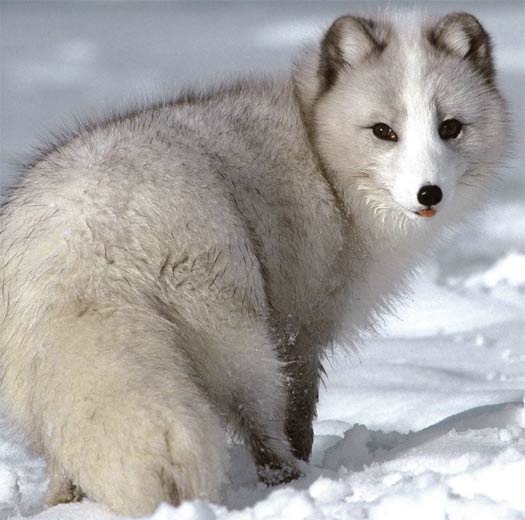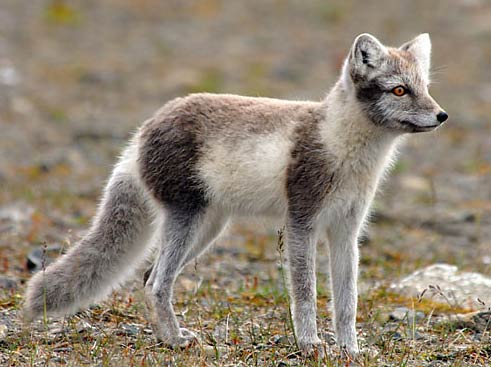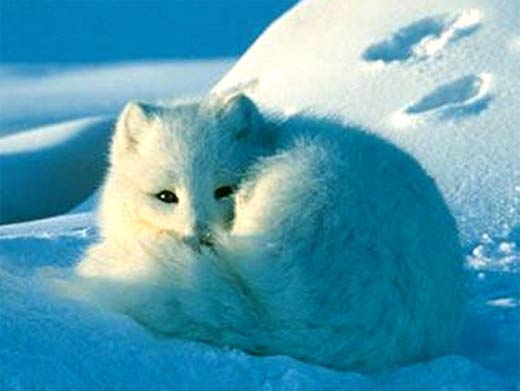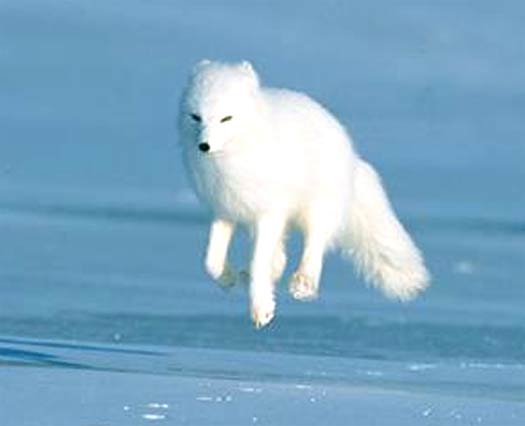Arctic Fox – World’s Warmest Coat, Crafty Tundra Dweller

The arctic fox is a hardy (though very small) animal that can be found in Alaska and Canada. An adult generally weighs an average of 6 to10 lb (2.7 to 3.5 kg). In the wild, this fox generally lives for 3 to 6 years. It favors small spaces to live in, and will commonly make a den in the side of a hill or cliff for shelter. These dens can be complex, often with many entrances, giving the fox accessibility and freedom of movement to multiple locations.
Generally, when one pictures an arctic fox, a solid white coat might be the first thing that comes to mind. However, during the summer, the fox sports a less thick brown coat. This keeps it from overheating, as the white coat that the fox is commonly seen with in the winter is the warmest coat of any mammal in the world. This would be problematic during the summer.

As winter approaches, the arctic fox’s brown fur gradually changes into a thick, white coat. By the time snow is prominent, the changeover is complete, making the fox extremely difficult to see among the thick blankets of snow covering its habitat. This effective camouflage gives the them an extreme advantage when hunting its prey, which often does not even realize the fox is nearby before being swept up. Interestingly, some arctic foxes develop slightly grey coats rather than the common solid white. This is relatively rare, however.


The arctic fox’s main diet consists mainly of small animals such as lemmings, voles, and birds, but it will certainly eat almost anything if it has to. If the fox is in the midst of a particularly difficult winter, and no food can be found, it can resort to scavenging, though it does not prefer this. Sometimes the they will follow larger animals, such as polar bears, in an attempt to pick up any food the animal may leave behind while hunting. This is a particularly dangerous practice for the foxes, however, as it is part of the polar bears’ menu! They are also adept at stashing food away to prevent these dangerous shortages, and will often bury extra stock for a later time.
